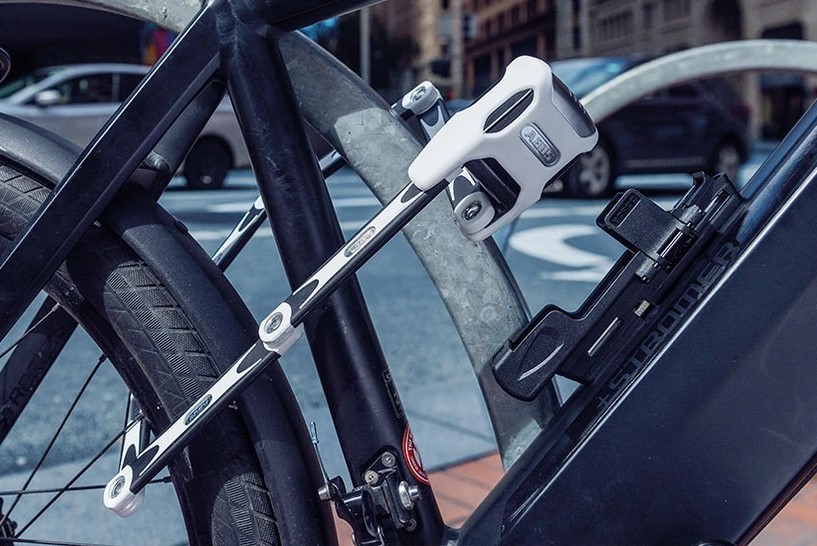Understanding Bicycle Locking Systems
Bike security has become essential with more riders using bicycles for commuting, fitness, or exploring the outdoors. Choosing a durable locking method is key to protecting your ride. This guide explains types of locks, key locking features, and what to look for in a top-tier lock to guard your bicycle from theft.
U-Shaped Bike Locks for Maximum Safety
U-shaped locking devices, often called D-style locks, are known for toughness. Built from solid steel, these locks resist forceful break-ins. The stiff U-bar secures your bike by clamping the frame to fixed posts or racks.
Features of U-Shaped Locks
-
Built from high-tensile materials for cut resistance
-
Comes in compact and full-size shapes for various frames
-
Commonly used in urban spots with high theft risk
Downsides to U-Shaped Locks
-
Heavier to carry on longer rides
-
Requires stationary anchors for locking
Heavy-Duty Chain Locks for Versatile Protection
Chain-style locks use tough steel links joined with secure padlocks. They work for multiple bikes or locking extra parts like tires or frames.
Advantages of Chain-Linked Locks
-
Wraps easily around large poles or tree trunks
-
Often covered with sleeves to avoid bike frame scratches
-
Can lock frames and wheels simultaneously
Points to Consider
-
Weighs more than cables or folding designs
-
Security relies on both the chain and padlock strength
Cable Locks for Light Security Use
Cable-based locks use braided steel strands and flexible plastic coatings. These are common among casual users who make short stops.
Strengths of Cable Systems
-
Light and easy to carry
-
Simple locking for quick stops or school campuses
-
Coils into compact loops for storage
Weaknesses
-
Prone to bolt-cutter attacks
-
Less suited for overnight outdoor storage
Foldable Locks for Portability and Strength
Foldable locks use rigid panels attached by metal rivets. This design folds small for backpacks yet expands to secure frames and wheels.
Foldable Design Highlights
-
Good compromise between bulk and durability
-
Locks into complex shapes for unusual racks or fences
-
Rivets add flexibility without reducing toughness
Foldable Lock Tradeoffs
-
Pricier than basic styles
-
Effectiveness tied to plate quality and construction
Wheel Locks and Seatpost Security Tools
Small-sized locks exist to protect parts like wheels or saddles. These add extra security alongside your main lock system.
Specialized Locking Advantages
-
Secures removable parts like wheels or quick-release seats
-
Lightweight additions to your security setup
-
Works well when paired with U-locks or chain types
Limits
-
Not meant to protect full bicycles
-
Requires additional tools for full-frame coverage
Picking the Right Lock for Your Bike
Your lock choice depends on more than brand or price. Consider your riding habits, the neighborhoods you visit, and how much time your bicycle stays unattended.
Security Grade Matters Most
Some riders only need basic protection at school or parks. Others need anti-theft tools for overnight parking. Stronger locks, like U or thick chains, guard better against prying, hacksaws, or cutters.
Transporting Your Lock
If your security gear feels like a burden, chances are you won’t use it. Compact styles, folding units, or frame-mounted holders keep your lock accessible. Make sure the design fits your cycling habits.
Choosing Locking Systems and Cylinders
Internal lock parts should resist tampering. Look for anti-pick cylinders or tamper-proof lock cores. Solid steel or brass bodies improve resistance to drilling or forced entry.
Lock Material Composition
A lock made of tempered steel stands up to impact tools. Avoid aluminum or cheap alloys that fail under pressure. If it’s light and cheap, it likely won’t hold up against theft attempts.
Budgeting for Bicycle Protection
Buying a high-quality lock might cost more, but it saves your ride. Spend 10% to 15% of your bike’s worth on a locking system. Losing a premium mountain bike to a $10 cable isn’t worth the risk.
Best Methods for Locking Bikes Safely
Using your lock the right way matters as much as the lock itself. Knowing where and how to lock your bicycle deters theft and secures your gear.
Choose High-Traffic Locking Zones
Always secure your bike in public or open areas. Crowds discourage thieves, and bright lighting adds another barrier. Abandoned alleys or side streets increase your risk.
Secure Frames and Major Components
Run your lock through the frame triangle and one wheel. Avoid locking wheels alone, as frames are easier to steal. Two-lock setups boost coverage and act as better deterrents.
Avoid Fragile or Temporary Structures
Don’t trust fences, old signposts, or wooden objects. Some racks can even be lifted. Secure your lock to solid iron posts or steel bike racks bolted to cement.
Keep the Lock High and Tight
Lock near the bike’s center and off the pavement. Low locks give thieves leverage using tools. Tight spacing limits the space for crowbars or cutters.
Maintenance for Longevity and Performance
Keeping your lock clean and functional helps it last longer. Like your bike, your lock needs upkeep to stay reliable in all weather.
Routine Cleaning and Lubrication
Dust and moisture jam cylinders over time. Use soft cloths and silicone sprays to clean lock internals. Never over-lubricate, as grease traps grime.
Check for Fractures or Rust
Inspect your lock before every ride. Look for cracked plates, rusting chains, or bent U-bars. If tampered with, replace the unit immediately.
Protect Locks from Harsh Conditions
Store your lock indoors when not in use. Freezing temps and moisture reduce metal strength and make locks harder to open. Keep it dry and sheltered to avoid corrosion.
Why Choosing the Best Lock Matters
Bike theft causes loss beyond money. A stolen ride impacts your freedom, commuting, and sense of safety. The right lock gives peace of mind while preserving your mobility.
Final Thought on Locking Strategy
Good bike security depends on more than equipment. Proper technique, frequent inspections, and strong locking zones all play a part. With smart habits and the right locking system, your bicycle stays protected wherever you go.

